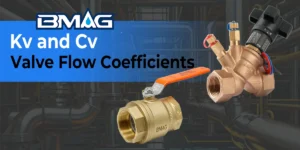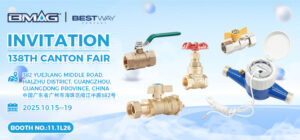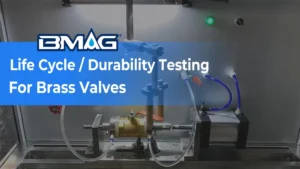Did you notice a round valve around your water pump? Observe its assembly; it has a handle and a ball-like center fixed protruded part. The ball central hollow section controls the valve functionality. The ball valve gets its name from this tiny spinner.
Are you searching for an efficient valve to control the water flow in your system? Ball Valves are the best; drive down to learn how!
Table of Contents
ToggleHow Does Ball Valve Work?
The ball valve working principle is very simple. It depends upon three components: the Ball, valve handle, and ports. Ball valve manufacturers design single-port, two-port, or multiport ball valves. Single port ball valves direct the fluid supply in one direction.
In the same way, two port ball valves can supply water or gas along two routes. Similarly, multi-port ball valves can regulate the fluid movement along many pipelines. However, a single ball valve handle is enough to manage the opening and closing of these ports.
As your brain controls your thoughts, the valve handle does. It controls the ball rotation to open and shut the connecting hole. The valve handle’s 180-degree position to the connected pipe shows that the valve is open. Likewise, the valve handle’s quarter turn rotation indicates valve closure. You can measure the angle between the pipe and valve handle; it’s 90 degrees exactly.
Top 5 Ball Valve Manufacturing Parts: You Must Know
Ball valve manufacturing companies focus on the quality of these five-valve components. Before purchasing, ask the ball valve dealer about the warranty for these five parts.
Valve stem
What is the function of the valve stem? The plant stem! The function is almost the same. The ball valve stem dictates when the rotating ball should move. Ball valve designers attach a stem or actuator at the top of a round ball. When you rotate the handle, the stem sends a command to the ball that it’s time to take a round!
O-rings
As the name indicates, these are small and round, like the “O” from the English alphabet. The ball valve manufacturers insert an O-ring while joining the ball and valve body. When water flows after ball movement, the O ring prevents the outer escape or leakage. On a simple note, you can say these are tiny, leakproof detectives or agents.
Valve body
The term valve body refers to protection or shelter. Your house protects you from harsh environments in the same way ball valve housing does. It serves as the insulation layer against natural hazards or corrosion.
Ball
Just imagine the male and female socket combination. The same is true for the ball and valve’s port union; it shuts off the water supply. The water supply is restored when it rotates and opens the valve port. You can understand the phenomena by placing a ball on your water pipe opening. Then, rotate the ball and see if it will leave the water pipe open.
Seat
The ball valve seat is the final sealing agent that works well when your valve is closed. Valve closing means the ball is on the valve port, and the seat finally covers the seal. BMAG produces brass ball Valves with durable, tight metal seats of different diameters. Our brass ball valve diameter ranges between 1/4″ and 4″.
Types of Ball Valves: Housing Assembly
Housing Assembly means the design you finalize to join your ball valve parts. But it doesn’t affect the valve functionality at all. The valve assembly can be helpful for you in the repair and maintenance of valves.
One-Piece Ball Valve
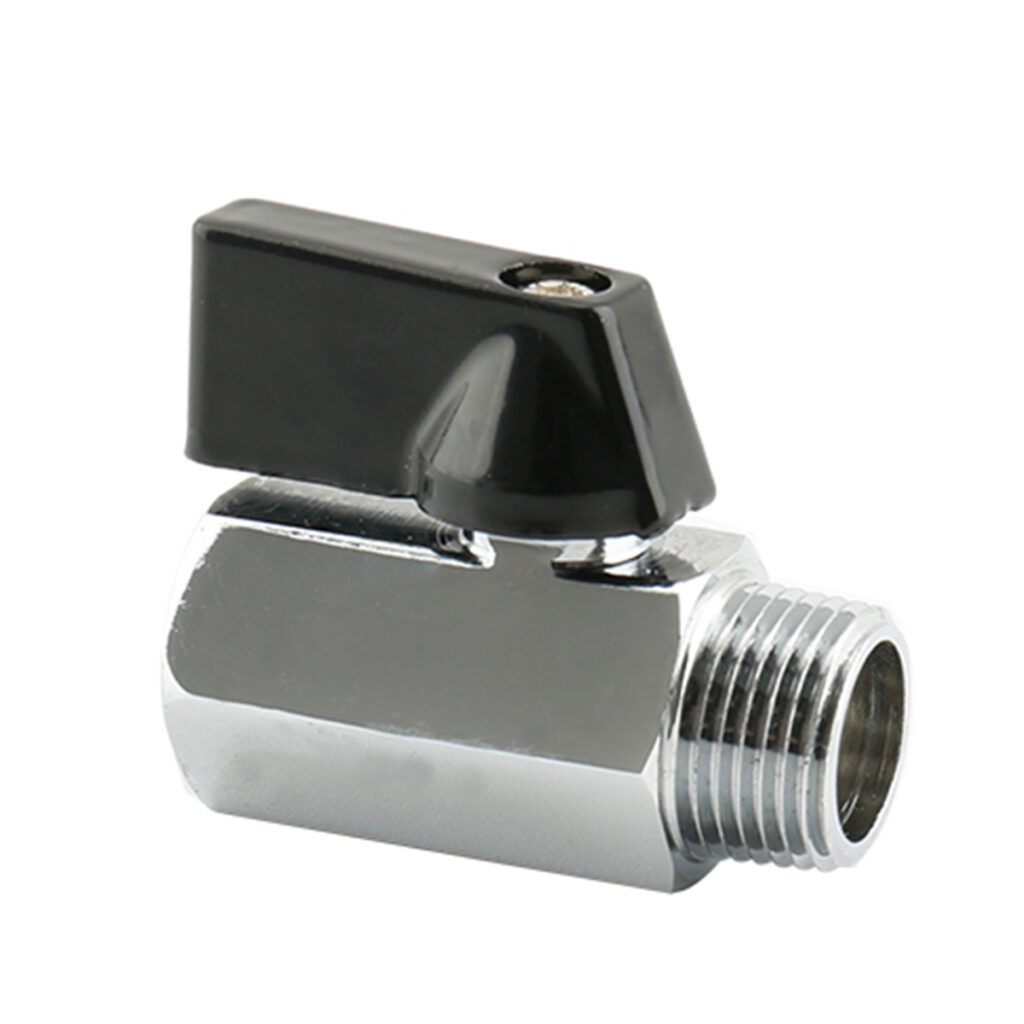
From one piece, you can assume that it serves as a single unit. So you can’t open it to clear any faults. Plus, you can operate it by hand; it’s not automatic. The ball valve opening is from the valve connection to your plumbing system. According to international standards, your one-piece ball valve maintains PN16 pressure for the water oil and gas supply.
Two-Piece Ball Valve
The name is enough to tell you that it has two parts. One is that you fit with a pipe, and the other is its body. You can open and repair these two-piece ball valves in case of malfunction. Two-piece ball valve maintenance is not expensive. But ensure that the valve assembly from the main pipeline is completely shut off. While two-piece ball valves are easy to disassemble for maintenance, it’s important to check for any wear or damage to the threads during disassembly. If there’s any damage, you’ll need to use Teflon tape or replace the parts to prevent leaks.
Three-Piece Ball Valve

Observe your ball valve; it has three pieces. Oh, it’s the latest three-piece ball valve. Two of three components, the caps meet the pipeline for a secure connection. However, the joint is not permanent; you can easily remove the valve for cleaning. One more convenience is that you can clean or repair the fitted valve. So, no worries at all. But ensure your budget before finalizing the purchase. Three-piece ball valves are better suited for pipeline systems that require long-term maintenance. They have a more complex manufacturing process, which makes them more expensive.
Types of Ball Valve: Ball Design
On the basis of Ball design, it has two types. You can easily identify both if you understand the following table.
| Floating Ball Valve | Trunnion Ball Valves |
|---|---|
| The ball has a single joining with the top stem. | Two ball connections: the top and bottom of the valve |
| Pocket friendly | Expensive |
| Low-pressure tolerance | Tolerate high fluid pressure |
| Sustain low torque | Transfer high torque |
| Require less maintenance | Need care and high maintenance |
| Manual ball valve actuator | Automatic ball valve actuator |
| Another name is the float ball valve | Second name guided ball valve |
Types of Brass Ball Valve: Bore Profile
The bore is the hole inside the valve spinning ball. Below is the standard classification of this hole of the Brass Ball valve.
Full Bore or Full Port Ball Valve
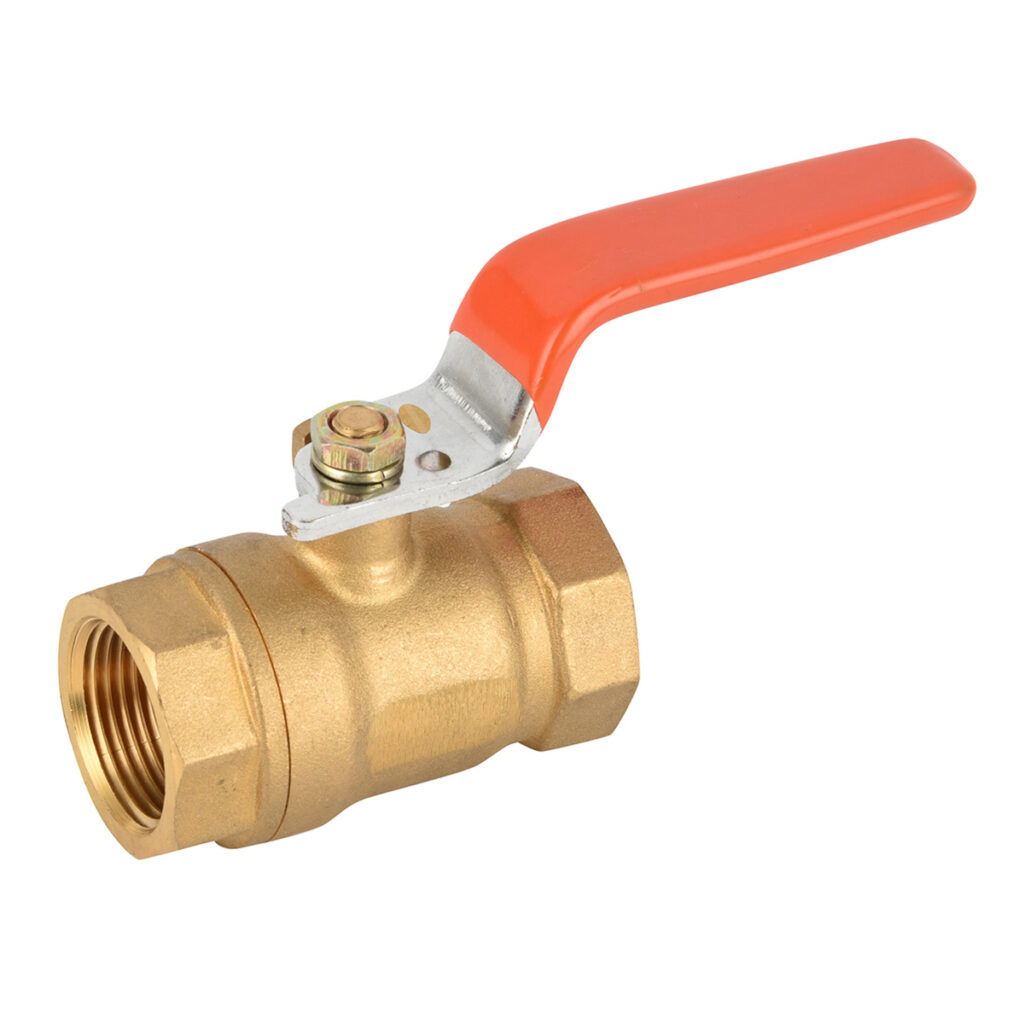
Have you ever seen a valve with a bigger ball? Yes, it’s a full port brass ball valve. The ball and pipe diameters are alike. The same is true for bore or hole size. The full-bore ball valve tightly fits around your flow pipe. Thus, you get an outburst of water through the pipe. However, its efficient functioning justifies its high price very well.
Reduced Bore Ball Valve
Do you know how a T joint compiles two pipe pieces? It’s the same as if you are inserting a small opening in a big hole. Yes, you have a reduced bore ball valve. People prefer to utilize reduced ball valves. It is cheap and has a high-pressure flow for domestic use. BMAG, the top ball valve manufacturer in China, recommends reduced bore and one-piece ball valve assembly to customers.
Segmented Ball Valve or V-Shaped Ball Valve
The ball valve central hole contains a “V” in its center. Do you have any old valves in your home? Then, you can understand this segmented valve’s outer look. The only exception is its V-line sensitive area responsible for fluid flow.
Types of Ball Valve: End Connection
Are you confused about how to join your brass brass ball valve with the pipe? Check if your valve has a flanged end connection or a threaded one. You can identify it easily by reading our following guide.
Threaded Ball Valve
BMAG, the top ball valve manufacturing company, produces small ball valves. Their valve diameter falls under 4 inches, ideal for a threaded connection. So, if you want a small ball valve for small appliances, contact us.
Under a limited budget, you can purchase a pipe-compatible threaded ball valve. Ask your ball valve supplier for a female threaded Ball valve connection. Automatically, it holds your pipe male threaded connection. Assume the key and lock fit in your mind to solve the puzzle.
Flanged Ball Valve
Have you ever noticed one or more flanges at ball valves joining faces or ports? Yes, these are flanged connection ball valves. For proper installation with pipe, you need to employ a proper gasket and bolt set. The resultant seal is a lifelong solution to your valve leaking problems. Larger production units and larger home appliances like the main water supply line flanged valves are the best.
Understanding Other Types of Ball Valve
Do you want to know more? Here you go to understand other highly demanding ball valves.
| Vented Ball Valve | Actuated Ball Valve |
|---|---|
| Small holes in the ball | No holes in the ball |
| Release pressure when close | Maintain pressure |
| Stop leakage | Leakproof |
| Handle cryogenic processes | Handle Industrial processes |
| Ball valve manual actuator | Ball valve motorized actuator |
BMAG Manufacture Specialized Brass Ball Valve
BMAG manufactures specialized Brass Ball valves with the following specs.
- Strong and Durable Material
- Tight Leak Proof Seals
- Easy Operating Structure
- Easy Cleaning and Fitting
- Low Maintenance Cost
- Compatible with many applications
- Resistant to Corrosion
- ISO Certified Material
Summary: Ready to Order Your Ball Valve?
We hope that after reading this blog you know what is a Ball valve? Also, you get the answer to how a ball valve works. You also came across different types of Ball valves. All the game lies inside the ball, which controls the overall valve functionality. At BMAG, we manufacture top-quality brass ball valves. Confirm your ball valve order now and enjoy your DIY journey!
FAQs
How Does the Ball Valve Work?
The ball valve works with the help of a small spinning central ball. If the valve handle is at 180 degrees, it is shut off. If the valve resembles the door lock handle position concerning the door, it is functional.
Are Ball Valves Directional?
Yes, the ball valve’s directional movement depends upon the central bore. When open, it directs the liquid flow.
What is a Full Port Ball Valve?
If the valve bore is the same size as the pipe diameter, it is a full port valve.
What Does a Ball Valve Look Like?
A ball valve resembles old valve designs except for the v bore in the v-shaped ball valves.
How to Install a Ball Valve?
Threaded Ball valves easily thread around the plumbing connection. However, the flanged valves need a gasket and bolt kit for insertion.



